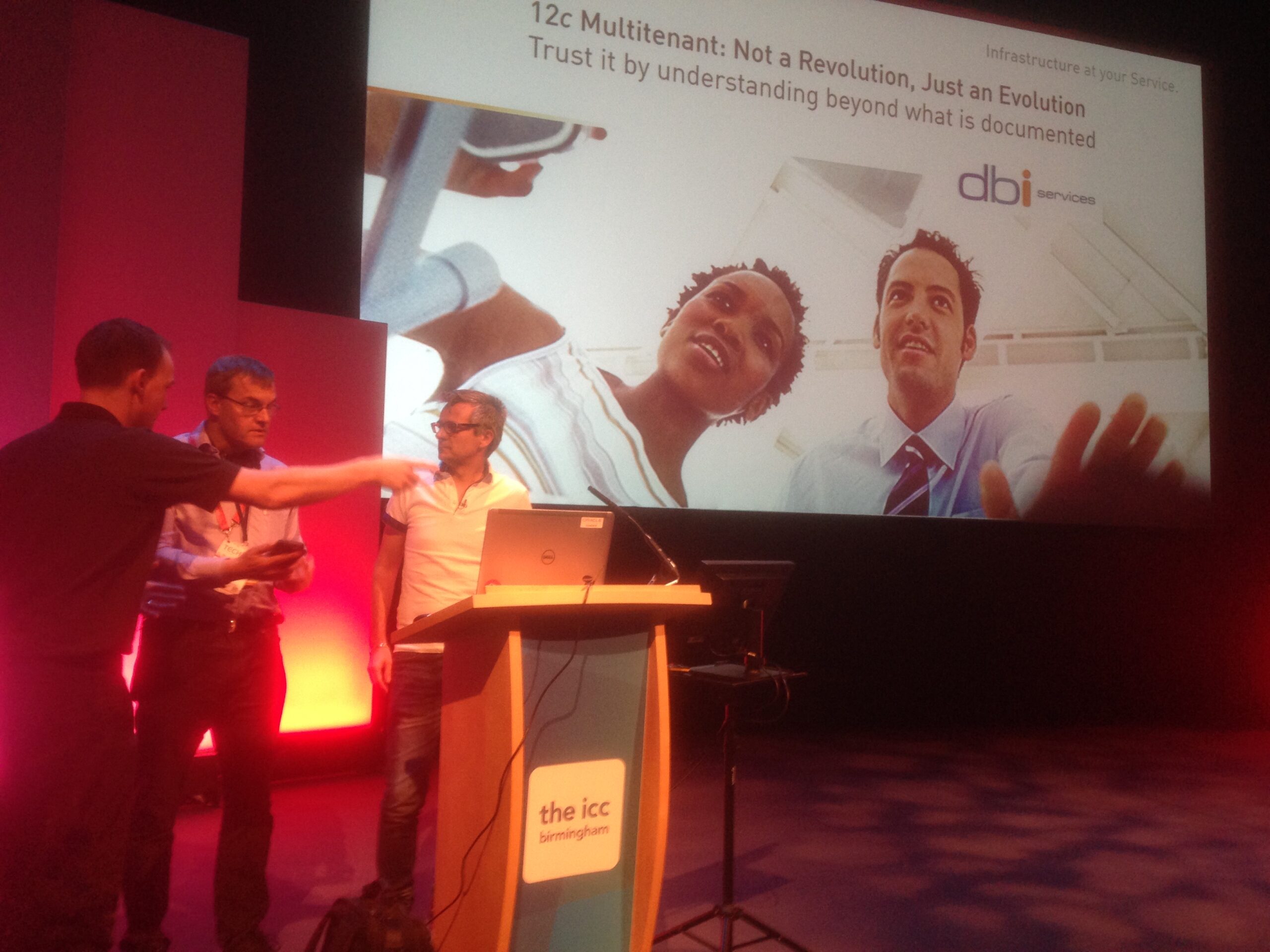This second day at UKOUG was quite good. I slept well at the Jurys Inn hotel and this morning, I enjoyed one more time a real English breakfast with beans, bacons, eggs and sausages. I like that to be fit over all the day 😉
Today, I attended the general Keynote and several sessions around integration, APEX & Database Development and Database. My colleague, Franck Pachot also presented today and I attended his session “12c Multitenant: Not a Revolution, Just an Evolution”. His session reminds me the article I wrote some years ago about Oracle Multitenant architecture and APEX.
Early in the morning, I followed the “Application Container Cloud Service: Backend Integration Using Node.js”. The presenter described what Node.js is, give javascript framework that can be easily integrated with Node.js such as Express.js to create HTTP server and retrieve Node.js data by creating HTTP server. He also presented the architecture where we can have Node.js hosted in Docker on the cloud.
After that, I attended the session “APEX Version Control & Team Working”. During that session, I learned more on Apex Version Control best practices and which nice commands can be done through SQL cli, apex java utility and so on. I was quite happy learning that for internal development we were not so bad and we already properly control version, make backup of APEX workspace, applications and themes. I now have information to improve our internal works around APEX development activities such as APEX ATAF “Apex Test Automation Framework”
Next session was “Interactive Grids in Application Express 5.1”. This session was a demonstration oriented session in which the presenter showed us new amazing features that will be incorporated in APEX 5.1. Most of the demonstration was based on the sample package application.
The next session was “Real Time Vehicle Tracking with APEX5”. For me it was great to see the power of Apex and the Oracle Database to store and display data in real time through the APEX5 and Oracle MapViewer. The application uses Oracle Spatial getting data from each vehicle GPS where PL/SQL converts data for geospatial information.
During the last session, “A RESTful MicroService for JSON Processing in the Database” I learned how to execute JavaScript directly from the database. In fact, with Java 8 and the Nashhorn project it’s now possible to execute JavaScript codes from the JVM and so directly in the database avoiding data shipping.
This is all for today and see you tomorrow, we will now take time with my blog reviewer to drink some pints in an English pub.

![Thumbnail [60x60]](https://www.dbi-services.com/blog/wp-content/uploads/2022/08/ABE_web-min-scaled.jpg)
![Thumbnail [90x90]](https://www.dbi-services.com/blog/wp-content/uploads/2022/08/OLS_web-min-scaled.jpg)
![Thumbnail [90x90]](https://www.dbi-services.com/blog/wp-content/uploads/2022/08/NME_web-min-scaled.jpg)
![Thumbnail [90x90]](https://www.dbi-services.com/blog/wp-content/uploads/2024/01/HME_web.jpg)